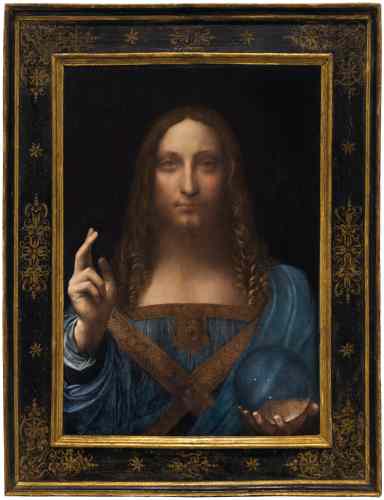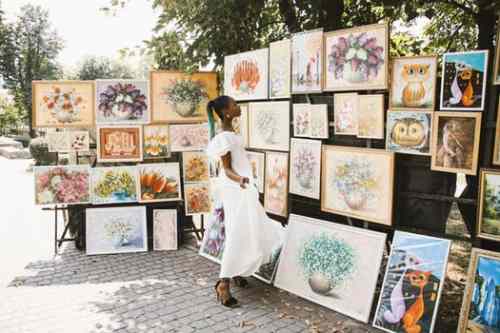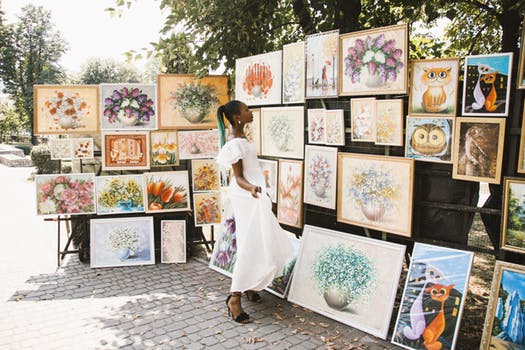Is there art in your investment portfolio? Salvator Mundi, the long-lost Leonardo da Vinci painting of Jesus Christ commissioned by King Louis XII of France more than 500 years ago, sold at Christie’s in New York for $450.3m, including auction house premium, shattering the world record for any work of art sold at an auction.

The 3rd edition of Tokini Peterside’s ARTX Fair pulled a massive crowd; a mix of art lovers, collectors, investors, artists, curators, students and the curious. With major art fairs taking place across the globe from London, Brussels and Lagos; art enthusiasts, collectors and sophisticated investors are increasingly including works of fine art in their investment portfolios. Here are some thoughts about including art in yours:
Capital Appreciation
The “right” art usually appreciates steadily with time. If you have carefully chosen a piece and sought professional advice, and are prepared to wait, sometime in the future, your art is likely to be worth considerable more than what you paid for it.

[Money Matters – Buy Low, Sell High]
Art is Subjective
The price of a painting or other piece of art is highly subjective and is worth just as much as a willing buyer is willing to pay for it. Several issues determine an artwork’s value including the artist, market trends, it’s condition, the subject and great PR.
It is difficult to calculate the rate of return on investments in art. Art is a collectable; as it gets older or more rare, art pieces tend to increase or at least hold their value. There are no guarantees when it comes to investing in art.
Market Fluctuation
A huge advantage of art as an investment class is that the inevitable volatility that you find in the financial markets is less so when it comes to art. Art investors thus avoid some of the sleepless nights that market volatility causes investors in bear markets.
Limited Information
When you invest in the financial markets, there is available information and analysis with which you can make informed decisions. Experts would have researched a company and its fundamentals, and looked at past performance which, even though does not guarantee future performance, gives some important signals.
[10 simple habits of successful women]
Think Long-Term
Don’t try to “get rich quick” with art. Art is not very liquid and it can be difficult to sell quickly. Mutual funds and blue chip stocks can generally be bought and sold fairly easily, sometimes almost instantaneously with a ready established market. It is as simple as a telephone call to your stockbroker or just a click away if you trade for yourself.
Selling art can be long, drawn out and involved; from valuers, dealers, insurance agents, lawyers and of course the tax authorities will be interested in capital gains. If you want to get the best price possible, selling art can take time, effort, as well as planning and knowledge.
Care for your Art
For many investors, the fact that you control your physical asset and it is in your care is important. Whilst the main advantage of having art is the fact that it is there for you to enjoy, the responsibility for caring for it, displaying, maintaining and storing it can be a challenge and lies with you; it is thus important that it is preserved and insured in case of fire, flood or other disaster in order for it to retain its value.

Is your Art Insured?
Depending on your collection’s value, you will probably require an additional rider or on your home insurance policy that covers special pieces. Some insurers may require that you keep very valuable pieces in a vault and not on display them at home. Conditions vary from insurer to insurer; some do not have the expertise in-house to place an appropriate value. Be sure to check with your agent, what they will and will not cover.
Diversification
Asset diversification can reduce the overall risk of an investment portfolio. By spreading savings around different asset classes, investors can minimise volatility across their overall portfolio. Basically, it’s about not putting all your eggs in one basket. Artwork tends to hold its value and is generally not affected by market factors.
A Hedge against Inflation
Inflation can eat the value of the monetary based assets like certificates of deposits and other money market instruments. Art can act as a hedge against inflation, because of it being a store of value and wealth preservation. It is real and tangible.

Include your Artwork in your Estate Plan.
Be proactive about determining the future of your artwork. How do you pass on your collection to the next generation? Your children may love the same painting. Perhaps they are not interested and resent paying any capital gains tax on art they have no interest in. Some paintings are far more valuable than others. Who gets what? These are all issues to consider as you would with other assets including stocks and property.
Many serious collectors donate ownership; either fractional or outright, of their artwork to institutions. A professional art consultant can identify appropriate homes for your collection. Particularly when art collectors decide to donate the art pieces as charity there are tax advantages.
Watch Emerging Artists
If you are a novice investor with a small budget, art fairs and galleries are good places to start. There you will find emerging artists that have distinct pieces that are affordable. If something you like is more expensive, you will be surprised that some artists might agree to an installment payment plan. Just ask.
Just as with stocks and other investments, resist the noise. Hype and excess demand just inflates the price of any asset. Even if you don’t intend to sell your artwork, it is exciting to observe a star emerge, whose early pieces you acquired several years before.
Do your Homework
In spite of the compelling reasons to invest in art, it is not an asset class you should venture into for investment purposes without careful consideration. Remember, every investment comes with a degree of risk and art is no different. Expertise in this asset class comes from careful research, being very involved in the sector and takes several years to cultivate.
Buy Art because You Like It
Art is certainly a viable investment asset to acquire but don’t bank on being able to sell your piece in Sotheby’s for a fortune in your lifetime! Ideally you should buy art because you love what you see; an important reason for being a collector is to be able to display such beauty and derive immense pleasure from it in your everyday life.
Your collection should be a reflection of your taste and a part of your everyday life. Seek professional advice but also trust your own instincts. Even if it doesn’t appreciate significantly in value, you would have derived so much pleasure from it; this is priceless when it comes to quality of life.

Nimi Akinkugbe has extensive experience in private wealth management.
She seeks to empower people regarding their finances and offers frank,
practical insights to create a greater awareness and understanding of
personal finance.
For more personal finance tips, contact Nimi:
Email: info@moneymatterswithnimi
Website: www.moneymatterswithnimi.com
Twitter: @MMWITHNIMI
Instagram: @MMWITHNIMI
Facebook: MoneyMatterswithNimi


